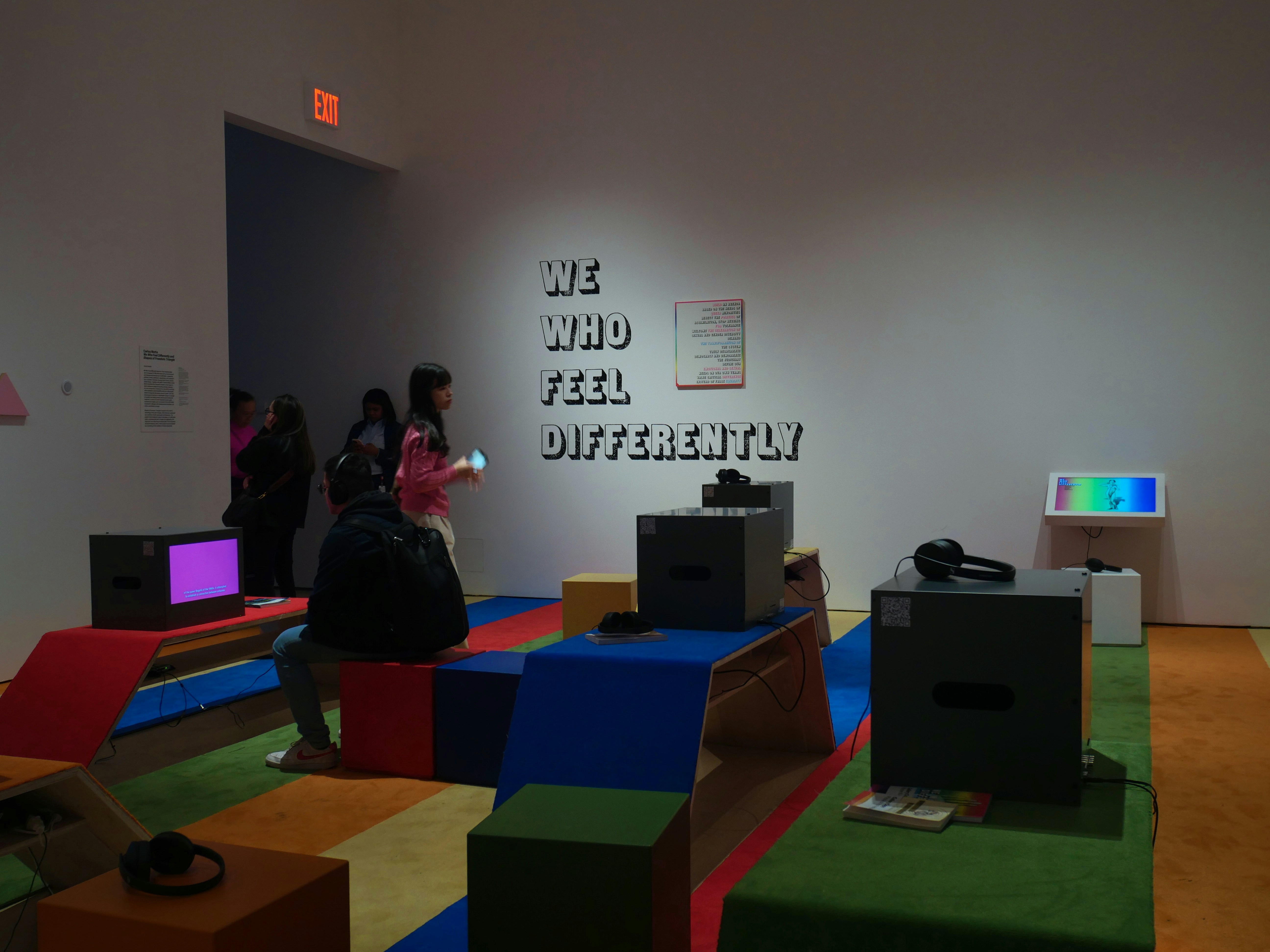🛡 Powerful Protection Spells That Shield From Harm
Safeguard yourself, loved ones, and your home from negative energy and spiritual threats with effective, trusted protection spells.
Introduction to Sensory-Friendly Design
Sensory-friendly design is a concept rooted in the principles of inclusivity and accessibility, aimed at creating environments that consider the sensory needs of all individuals, particularly those who experience sensory processing differences. These individuals may have heightened or diminished sensitivity to stimuli such as light, sound, and texture, making traditional spaces uncomfortable or even overwhelming. Sensory processing differences can be prevalent in various populations, including those with Autism Spectrum Disorder, sensory integration disorders, or other neurodiverse conditions, as well as in individuals dealing with anxiety or PTSD.
The importance of sensory-friendly design lies in its potential to transform environments into welcoming spaces that promote comfort, well-being, and functionality. By thoughtfully addressing sensory sensitivities through design elements, architects and designers can create areas that reduce overstimulation and foster a sense of calm. This thoughtful approach can significantly improve the quality of life for individuals experiencing sensory challenges, enabling them to navigate spaces with greater ease and confidence.
Key concepts underlying sensory-friendly design include the use of adaptable lighting, soundproofing techniques, and tactile surfaces. For instance, soft, natural lighting can help minimize glare and create a soothing atmosphere, while sound-absorbing materials can reduce noise levels, thus promoting a quieter space. Additionally, providing a variety of textures in furnishings and surfaces can cater to individuals with different tactile preferences, enhancing their overall comfort. By integrating these strategies, designers can create inclusive environments that not only accommodate sensory needs but also encourage engagement and positive experiences for all users.
Understanding Sensory Processing Differences
Sensory processing differences refer to the varying ways individuals perceive, interpret, and respond to sensory stimuli from their environment. These differences can manifest significantly in individuals with conditions such as autism spectrum disorder (ASD), attention deficit hyperactivity disorder (ADHD), and sensory processing disorder (SPD). Each of these conditions includes unique characteristics that affect how sensory information is processed and experienced.
Individuals with autism often have heightened sensitivity to sensory inputs, which can result in overwhelming feelings in environments that are filled with bright lights, loud noises, or strong odors. This heightened sensitivity can lead to a strong aversion to certain sensory experiences, making interaction in typical settings challenging. Likewise, others on the spectrum may also exhibit reduced sensitivity, seeking out intense sensory experiences that can be perceived as inappropriate in conventional environments.
ADHD presents another set of sensory processing challenges. Individuals diagnosed with ADHD may struggle to filter out extraneous stimuli, which can distract them and impede their ability to focus. In traditional spaces designed with a standard approach, they may experience heightened levels of frustration, as the overwhelming sensory input exacerbates their difficulties in attention management.
For those with sensory processing disorder, the experience can be more variable. Individuals may experience either hyper-responsiveness or hypo-responsiveness to sensory stimuli, impacting their ability to engage with their surroundings safely. For example, a person may be unable to tolerate the feel of certain textures or may find themselves unresponsive to critical environmental cues, resulting in everyday challenges.
Understanding these differences is crucial, as it highlights the need for sensory-friendly design. By acknowledging the unique experiences of individuals with sensory processing differences, designers can create environments that reduce overstimulation and promote greater inclusivity and comfort.
The Principles of Sensory-Friendly Design
Sensory-friendly design is an approach that aims to create environments accommodating different sensory needs. This concept gains significance as society strives for inclusivity, ensuring that all individuals feel comfortable and valued in various spaces. Three core principles guide sensory-friendly design: comfort, accessibility, and flexibility.
Firstly, the principle of comfort emphasizes the need to create environments that reduce sensory overload. This can be achieved through the use of soft lighting, muted colors, and soundproofing materials. For instance, in educational settings, classrooms can be designed with soft furnishings and calming colors to foster a conducive learning atmosphere. Similarly, workplaces can incorporate noise-cancelling installations to minimize distractions, thus enhancing employee productivity and well-being.
Explore Our Powerful Magic Spells
Choose a spell that suits your needs and experience real results today!
Secondly, accessibility is crucial in sensory-friendly design. This principle ensures that spaces are designed to be usable by all individuals, regardless of their sensory sensitivities. Implementing tactile paths, visual aids, and clear signage can significantly enhance navigation for everyone. Public spaces, including parks and libraries, can benefit from accessible design elements such as wheelchair-friendly routes and sensory gardens that invite interaction without overwhelming the user.
Lastly, flexibility in design allows for spaces to adapt to the changing needs of individuals. Incorporating movable furniture, adjustable lighting, and interactive installations can help create adaptable environments that cater to users’ varying sensory needs. For example, a community center could feature multipurpose rooms that can be easily reconfigured for different activities, ensuring an inclusive atmosphere for all participants.
By adhering to the principles of comfort, accessibility, and flexibility, designers can contribute to making spaces more inclusive for everyone. These guiding principles lay the foundation for thoughtful design that recognizes and addresses sensory differences, ultimately fostering environments where all individuals can thrive without discomfort.
Elements of Design: Sensory-Friendly Features
Designing spaces that cater to a diverse range of sensory needs involves careful consideration of various elements, including lighting, acoustics, color schemes, and textures. Each feature plays a significant role in influencing an individual’s sensory experience and can be adjusted to create a more inclusive environment.
Lighting is one of the most crucial components of sensory-friendly design. Bright, harsh lighting can be overwhelming and cause discomfort, particularly for individuals with sensory sensitivities. Instead, designers can opt for softer, ambient lighting that can be adjusted according to the needs of the space. Utilizing natural light through the incorporation of large windows or skylights can also enhance the sensory experience by providing a connection to the external environment. Additionally, using dimmable fixtures allows individuals to control light intensity, accommodating various preferences and needs.
Acoustics are equally important in creating sensory-friendly spaces. Excessive noise can provoke anxiety and inhibit communication. Therefore, incorporating sound-absorbing materials, such as carpets, acoustic panels, and plush furnishings, can significantly improve the auditory experience. Designing open spaces with designated quiet zones also promotes calmness, allowing individuals to retreat and regroup when they feel overwhelmed by sensory stimuli.
The choice of color schemes directly influences mood and perception. Soft, muted colors are often preferred as they evoke calmness and reduce visual clutter. In contrast, vibrant colors may be stimulating for some individuals. By using a balanced palette and integrating color psychology principles, designers can create environments that accommodate diverse sensory preferences. Similarly, texture plays an essential role in sensory experience; incorporating a variety of materials that cater to tactile sensitivities can enhance comfort and promote a sense of belonging within the space.
In conclusion, understanding the impact of these design elements is vital for creating sensory-friendly spaces that foster inclusivity. By thoughtfully integrating lighting, acoustics, color schemes, and textures, designers can significantly enhance the sensory experiences of individuals, making spaces accessible and welcoming for everyone.
Case Studies: Successful Sensory-Friendly Spaces
Creating sensory-friendly spaces involves understanding the diverse needs of individuals, particularly those on the autism spectrum or with sensory processing disorders. Numerous organizations, schools, and public areas have embraced sensory-friendly design principles, resulting in environments that enhance inclusivity and improve user experiences. This section highlights three notable case studies illustrating the implementation, challenges, and outcomes of sensory-friendly spaces.
One prominent example is the Children’s Hospital of Philadelphia, which undertook significant renovations to create calming spaces for patients and their families. The facility’s waiting areas were transformed with soft lighting, sound-absorbing materials, and designated quiet zones. By reducing sensory overload, the hospital successfully created an environment that alleviated anxiety among young patients undergoing treatment. Feedback from families indicated a marked improvement in comfort levels, showcasing how sensory-sensitive design can positively impact mental health in clinical settings.
❤️ Powerful Real Love Spells That Work
Attract true love, reunite with your partner, and strengthen relationships with proven magic spells.
Another noteworthy case is the Maryland School for the Deaf, which integrated sensory-friendly classrooms equipped with adjustable lighting and flexible seating options. These design modifications were implemented to support students with varying sensory needs, allowing for personalized learning experiences. Teachers reported that students who previously struggled in traditional classroom settings showed increased focus and engagement. This case underscores the importance of tailoring educational environments to accommodate sensory variations, ultimately fostering a more effective learning atmosphere.
Lastly, a local community library launched a sensory-friendly hour once a week, characterized by low noise levels, dimmed lights, and sensory-friendly activities. This initiative was aimed at including families with sensory sensitivities and promoting equitable access to educational resources. Patrons expressed appreciation for the thoughtful design changes, which made the library a welcoming space for all. This case demonstrates how public spaces can adopt sensory-friendly principles to create inclusive environments that cater to a broader audience.
Collaborative Approaches to Design
Creating inclusive environments that cater to individuals with sensory processing differences involves a multifaceted approach. Central to this process is collaboration among diverse stakeholders, including designers, architects, occupational therapists, and the end-users themselves. Each of these groups brings a unique perspective that, when combined, can lead to innovative and effective sensory-friendly design solutions.
Designers and architects play a pivotal role in drafting the layouts and aesthetic elements of a space. However, their expertise must be informed by the experiences and insights of those who navigate these environments daily. This is where input from individuals with sensory processing differences becomes invaluable. Engaging them in the design process ensures that their specific needs are acknowledged and addressed. For instance, strategies such as eliminating distracting stimuli, optimizing acoustics, and providing adaptable spaces can be better developed when the voices of end-users are included.
Occupational therapists also contribute significantly by applying their knowledge of sensory integration and its impact on individuals’ daily lives. Their understanding of how different environments can facilitate or hinder sensory experiences allows for a more comprehensive approach to design. By collaborating with these professionals, designers can learn about the practical applications of various design elements, helping bridge the gap between theoretical design principles and real-world functionality.
Furthermore, fostering strong community support is essential in promoting inclusive design. When stakeholders convene, they can share experiences and ideas, leading to a greater awareness of sensory-friendly practices. Communities that advocate for inclusive environments help instill a culture that values the needs of individuals with sensory processing differences. This collaborative ethos not only enhances design outcomes but also creates spaces that align more closely with the diverse requirements of all users.
Implementing Sensory-Friendly Design: Tips and Strategies
Creating sensory-friendly environments involves thoughtful planning and execution. Individuals and organizations looking to embrace inclusivity in their spaces can adopt various strategies to enhance sensory experiences. One essential tip is to conduct a sensory audit of the existing environment. This process includes evaluating lighting, sound levels, textures, and colors present in the space. By identifying overstimulating elements, stakeholders can make informed decisions about necessary adjustments.
Another effective strategy is to incorporate flexible design options. Spaces should offer adjustable features that accommodate diverse sensory needs, such as dimmable lights, soundproof materials, and tactile surfaces. For example, utilizing movable partitions can create quiet zones or collaborative areas, making the environment adaptable to individual preferences. Furthermore, incorporating natural elements like plants can reduce anxiety and improve overall well-being.
In terms of resources, individuals seeking to implement sensory-friendly design should consider guidelines provided by organizations specializing in inclusive design. Various online resources and toolkits offer insights on best practices, including layout suggestions and material recommendations. Additionally, considering collaboration with professionals—such as interior designers trained in sensory considerations—can significantly enhance the design process.
Community engagement plays a crucial role in developing sensory-friendly spaces. Gathering feedback from diverse users can provide valuable perspectives on sensory needs and preferences. Hosting workshops or focus groups can promote an inclusive design process, ensuring all voices are heard. Ultimately, the incorporation of sensory-friendly design principles is a continuous journey, where monitoring and adapting the environment is necessary as needs evolve over time.
By following these actionable tips and utilizing available resources, individuals and organizations can effectively implement sensory-friendly design, leading to inclusive and welcoming spaces for all individuals.
The Future of Sensory-Friendly Design
The future of sensory-friendly design is poised for significant evolution as awareness and understanding of sensory processing continue to expand across various sectors. As society becomes more cognizant of the needs of individuals with sensory sensitivities, the integration of innovative materials and advanced technologies is expected to play a pivotal role in shaping inclusive environments. In particular, we can anticipate an increasing incorporation of adaptable elements that respond to users’ sensory preferences, promoting overall well-being.
One potential trend is the use of smart technology in sensory-friendly spaces. Homes, schools, and public areas may increasingly incorporate sensors and automation systems that regulate lighting, sound, and temperature based on real-time data. For instance, smart lighting systems could adjust their intensity and color based on a person’s sensory needs, creating a customizable atmosphere that fosters comfort. Furthermore, noise-canceling technologies may become prevalent in public spaces, safeguarding individuals from overwhelming auditory stimuli, thus enhancing their experience.
The material design landscape is also likely to evolve. The development of innovative materials that offer sensory benefits, such as soft-touch surfaces or sound-absorbing fabrics, could become commonplace. These materials not only contribute to aesthetic appeal but also promote tactile comfort and acoustic regulation. Additionally, biophilic design principles may gain traction, emphasizing natural elements that promote tranquility, such as greenery and natural light. This blend of technology and nature may create environments that are better equipped to meet diverse sensory needs.
In summary, the future of sensory-friendly design is bright, as the interplay between technology, innovative materials, and heightened societal awareness will lead to more inclusive spaces. Stakeholders across many disciplines will be crucial in driving this change, ensuring that all individuals feel welcome and supported in their environments.
Conclusion: The Impact of Sensory-Friendly Design
In reviewing the various aspects of sensory-friendly design, it is clear that such considerations are not merely enhancements but essential modifications that contribute significantly to the inclusivity and well-being of individuals across diverse backgrounds. Sensory-friendly spaces are characterized by their thoughtful approach to various sensory inputs—including lighting, sound, texture, and spatial organization. These elements are crucial for creating environments that cater to individuals who may experience sensory sensitivities, including but not limited to those on the autism spectrum, individuals with anxiety disorders, and others who may benefit from a calming and predictable atmosphere.
The importance of sensory-friendly design lies in its capacity to reduce overstimulation and anxiety, providing a sense of safety and comfort to users. For educational institutions, healthcare settings, and public spaces, the integration of sensory-friendly principles can greatly enhance the experience for all individuals, fostering inclusivity and participation. Such environments can encourage learning, social interaction, and overall mental well-being. As communities evolve to become more inclusive, the need for spaces that address sensory needs—while also accommodating various abilities and preferences—becomes increasingly critical.
Advocating for and implementing sensory considerations is not solely the responsibility of designers and architects; it calls for a collective effort from community members, stakeholders, and policymakers. By recognizing the impact of sensory-friendly design, individuals can take proactive steps to promote environments that embrace diversity. Whether in homes, workplaces, or public venues, the ripple effect of inclusive sensory design can enhance the quality of life for countless individuals. As we move forward, let us prioritize these principles to ensure all spaces reflect and honor the rich tapestry of human experience.






